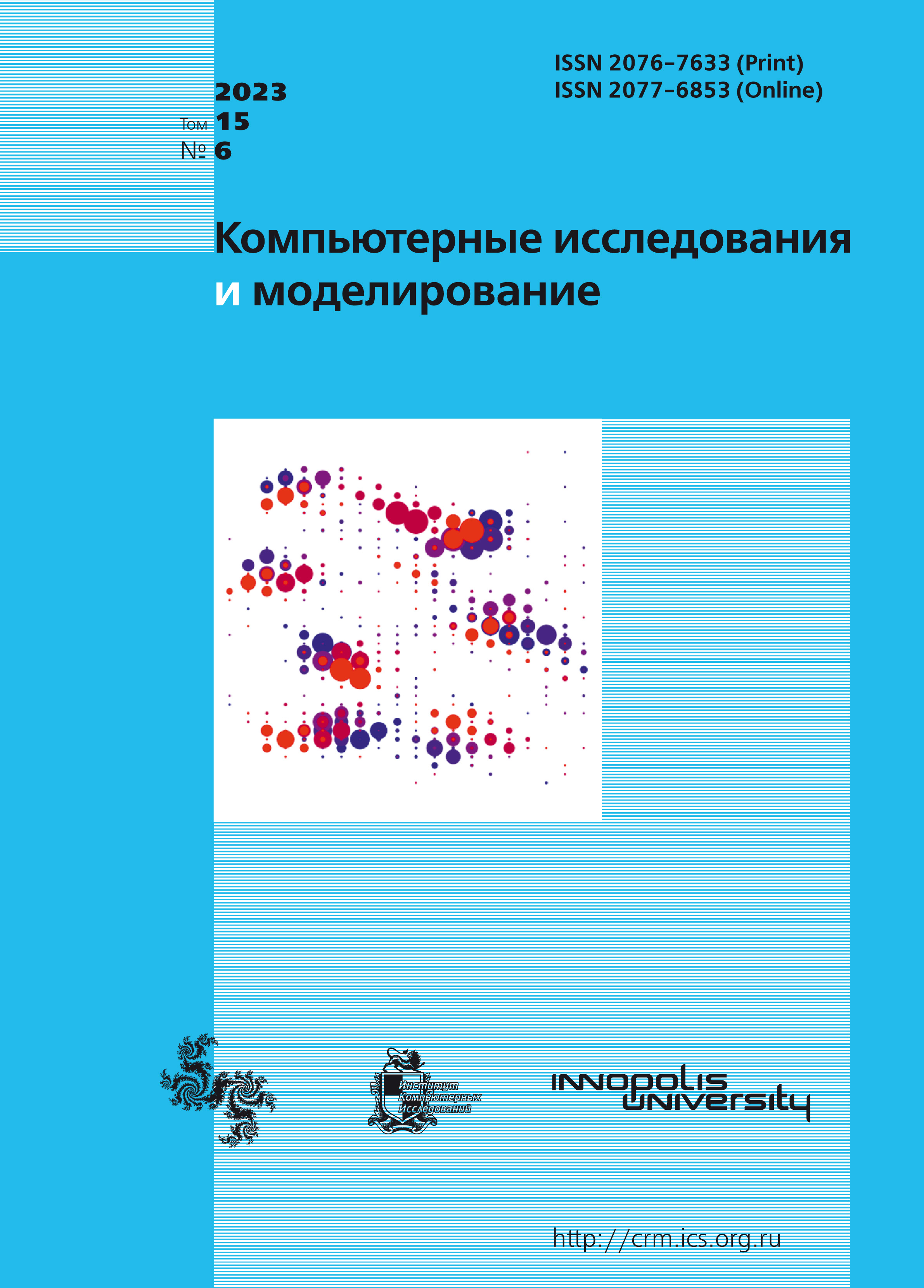All issues
- 2024 Vol. 16
- 2023 Vol. 15
- 2022 Vol. 14
- 2021 Vol. 13
- 2020 Vol. 12
- 2019 Vol. 11
- 2018 Vol. 10
- 2017 Vol. 9
- 2016 Vol. 8
- 2015 Vol. 7
- 2014 Vol. 6
- 2013 Vol. 5
- 2012 Vol. 4
- 2011 Vol. 3
- 2010 Vol. 2
- 2009 Vol. 1
Solution to a two-dimensional nonlinear heat equation using null field method
 pdf (302K)
pdf (302K)
The paper deals with a heat wave motion problem for a degenerate second-order nonlinear parabolic equation with power nonlinearity. The considered boundary condition specifies in a plane the motion equation of the circular zero front of the heat wave. A new numerical-analytical algorithm for solving the problem is proposed. A solution is constructed stepby- step in time using difference time discretization. At each time step, a boundary value problem for the Poisson equation corresponding to the original equation at a fixed time is considered. This problem is, in fact, an inverse Cauchy problem in the domain whose initial boundary is free of boundary conditions and two boundary conditions (Neumann and Dirichlet) are specified on a current boundary (heat wave). A solution of this problem is constructed as the sum of a particular solution to the nonhomogeneous Poisson equation and a solution to the corresponding Laplace equation satisfying the boundary conditions. Since the inhomogeneity depends on the desired function and its derivatives, an iterative solution procedure is used. The particular solution is sought by the collocation method using inhomogeneity expansion in radial basis functions. The inverse Cauchy problem for the Laplace equation is solved by the null field method as applied to a circular domain with a circular hole. This method is used for the first time to solve such problem. The calculation algorithm is optimized by parallelizing the computations. The parallelization of the computations allows us to realize effectively the algorithm on high performance computing servers. The algorithm is implemented as a program, which is parallelized by using the OpenMP standard for the C++ language, suitable for calculations with parallel cycles. The effectiveness of the algorithm and the robustness of the program are tested by the comparison of the calculation results with the known exact solution as well as with the numerical solution obtained earlier by the authors with the use of the boundary element method. The implemented computational experiment shows good convergence of the iteration processes and higher calculation accuracy of the proposed new algorithm than of the previously developed one. The solution analysis allows us to select the radial basis functions which are most suitable for the proposed algorithm.
Indexed in Scopus
Full-text version of the journal is also available on the web site of the scientific electronic library eLIBRARY.RU
The journal is included in the Russian Science Citation Index
The journal is included in the RSCI
International Interdisciplinary Conference "Mathematics. Computing. Education"






